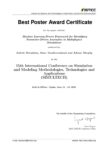The DIPSA group at Queen’s, led by Hans Vandierendonck, studies and designs high-performance and parallel solutions for data-intensive applications. Our work considers computing systems (runtime systems and computer architecture) and the design and optimisation of algorithms for a variety of applications in scientific computing and machine learning. Some branches of our activity also consider applications of machine learning.
– High-Performance Graph Processing studies the design and implementation of efficient algorithms that operate on graph-structured data. As data set sizes continue to grow at exponential rates, the demand to efficiently analyse large graph-structured data sets increases. Graph data sets, however, have a number of characteristics which introduce major challenges for efficient processing, such as the pattern of interconnections in the graph, skewness of degree distributions, and size. While some graph analyses demonstrate a major lack of memory locality that makes them ill-suited to modern computing architectures, other analyses are prone to combinatorial explosion. Our interest is to design efficient computing systems and algorithms for these problems.
– Transprecise and Approximate Computing explores the view that computing need not be (and cannot always be) exact. Many applications admit a degree of error that does not reduce the quality of experience. For instance, digital video playback may incur visual artefacts such as pixelation that is confined to a narrow area and appears only for a brief period of time. This can often go unnoticed. In other cases, such as scientific computing, computations aim to mimic or predict physical processes, yet numeric discretisation methods and computer arithmetic introduce inevitable inaccuracies. As such, absolute exactness in computing is neither achievable nor required. The goal of transprecise and approximate computing is then to design systems and algorithms that judiciously trade off precision in order to improve other aspects of the system, such as speed, power or energy consumption, or the ease of constructing applications.
– Machine Learning evolved from the study of transprecise computing and graph algorithms and aims to provide solutions for novel machine learning tasks.
– Distributed algorithms and consensus
News
- ParaGrapher: A Parallel and Distributed Graph Loading Library for Large-Scale Compressed Graphs – BigData’25 (Short Paper)

- OrbitSI is now on PyPi
- Wasp: Efficient Asynchronous Single-Source Shortest Path on Multicore Systems via Work Stealing – SC’25
- New Research Paper – A Novel Multi-View Perspective on XAI for Time Series Classification 🤖🔍
- Invited Talk – Efficient Computation through Tuned Approximation by David Keyes
- Invited Talk – Fine-Grained and Phase-Aware Frequency Scaling for Energy-efficient Computing on Heterogeneous Multi-GPU Systems by Lorenzo Carpentieri
- Invited Talk – A Constraint Programming Solver You Can Trust (But Don’t Have To) by Ciaran McCreesh
- FERNS: Holistic integration of eco-Friendly dEsign tools, mateRials, fabrication technologies for the responsible co-creation of future Sustainable integrated electronic systems

- Best Poster Award at SIMULTECH 2025

- Best Poster Award at IPDPS 2025

